Crossing the border: US migrants seek refugee status in Canada
- Published
'I lost all my fingers': Asylum seekers make dangerous border crossing
Asylum seekers are illegally crossing from the US into Canada in growing numbers hoping to receive refugee status. One small prairie town in southern Manitoba has become the nexus point for migrants who have lost hope in the US.
It was a cold Seidu Mohammed and Razak Iyal could barely comprehend.
On Christmas Eve, they found themselves struggling through a waist-deep field of snow in a rash night-time bid to sneak across the Canada-US border.
The two men had met just few hours before at a Minneapolis bus station and both faced deportation back to Ghana after being denied refugee status in the US.
They had heard through a network of other refugees and African expats that if they could get into Canada, they had a second shot at asylum in the north.
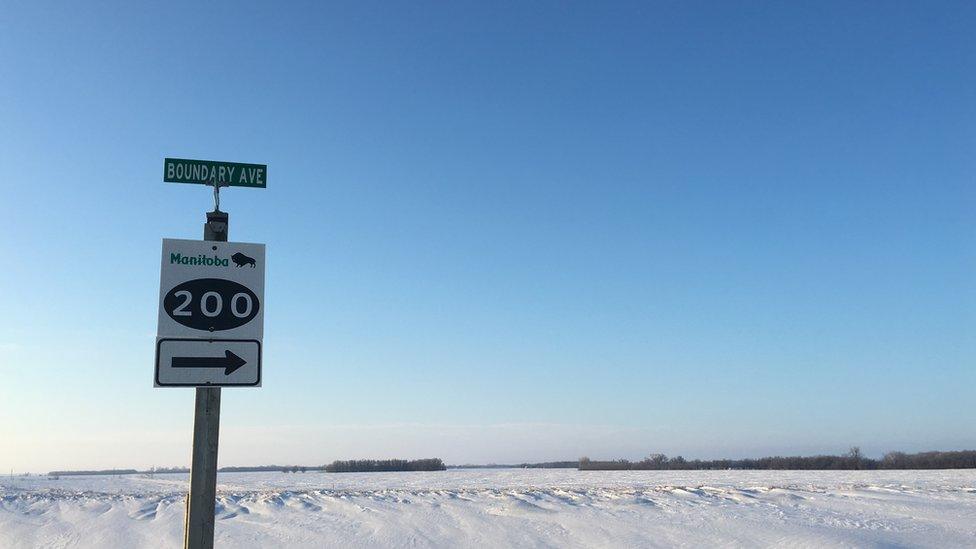
The view towards the US from Emerson, Manitoba
The path was straightforward: find a ride to the border from Minneapolis, MN or Grand Forks, ND, avoid patrols until you reach Canadian soil, and then turn yourself into Canadian authorities as an asylum seeker.
Iyal and Mohammed decided to make the trek together, and paid US$200 each to a cab driver who dropped them near the international boundary.
They kept to the road until they neared the border.
"That's where we saw the big farm with the snow. Snow everywhere. We were seeing the light of the border far from us, but we are seeing the light," Iyal recalls.
Soon they had lost their gloves in the snow. The wind stole Mohammed's baseball cap.
"There is wind and cold," he says "And the wind is blowing the snow into our face. So I can't see nothing."
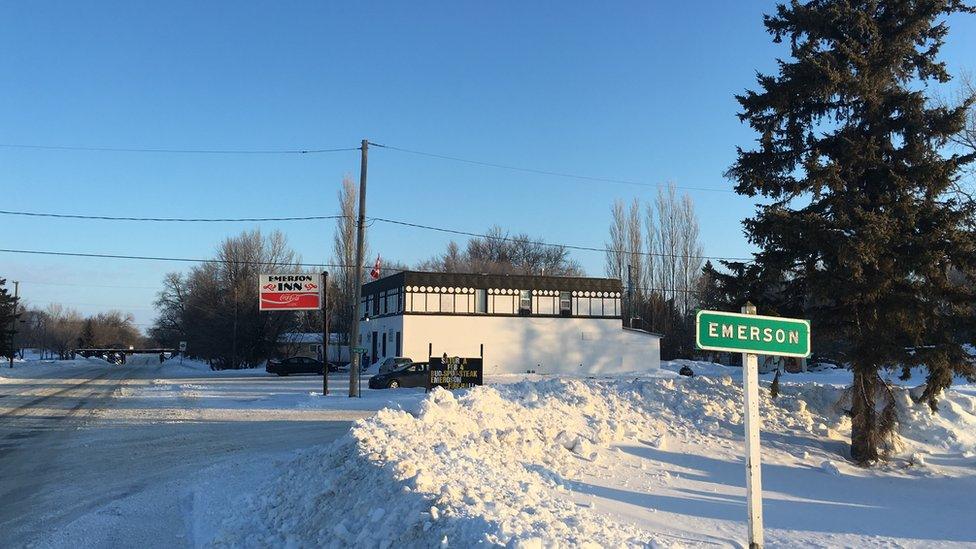
Emerson, Manitoba
By the time they reached Highway 75 in Manitoba, their hands had frozen into claws. They could not reach the phones in their pockets to dial 9-1-1 as planned. Mohammed's eyes had frozen shut.
The only vehicles on the road before dawn on Christmas were transport trucks ferrying cargo between the US and Canada. Many passed, flashing their high beams at the two before blowing by, until one stopped to give them assistance.
They have been receiving treatment at a specialised burn unit in a Winnipeg hospital since that 10-hour journey. Both had most of their fingers amputated due to the severe frostbite.
Iyal says nurses had to chip away at the snow and ice between Mohammed's fingers.
Their story has brought attention to a phenomenon that is not new but has been growing steadily in recent years. And it has not deterred others from making the cross-border trip. Record numbers of people have crossed near Emerson in the past few weeks.
It is not just Manitoba. Quebec and British Columbia are also seeing more and more people illegally crossing the border to make refugee claims.
In the prairie province, the influx is centred on Emerson, a municipality of about 700 people that borders Minnesota.
The rural town, surrounded by farm fields, is about 625km (390 miles) up the Interstate from Minneapolis, which has the largest Somali population in North America. Word about the Emerson crossing has spread within the expat community, as far as down to Brazil.
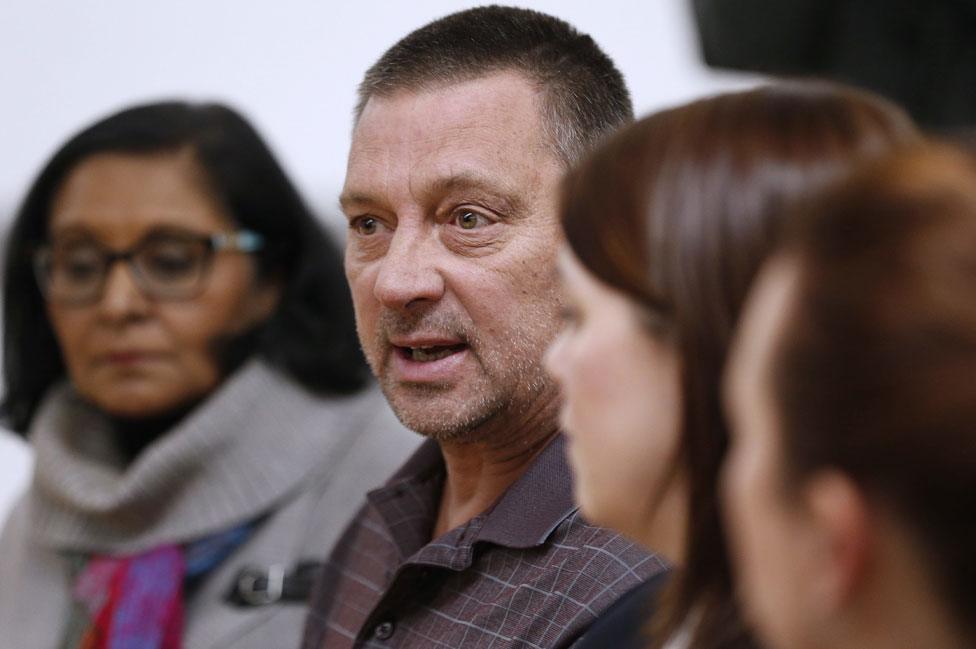
Janzen and other officials held an emergency meeting
"We've always had people jumping the borders, for, I don't know, 30, 40, 50 years. Back then, it was people running away from something - usually the law," says town official Greg Janzen.
But in recent years it has been mostly asylum seekers, hailing mainly from Somalia but also Ghana, Djibouti, and Ethiopia, who are finding their way across. Community workers say most have been denied refugee status in the US.
Many have been met with generosity.
Yahya Samatar, a former human rights worker in Somalia, fled threats from Islamist al-Shabab militants and sought refugee status in the US, where he spent seven months in an immigration detention centre.
'I lost all my fingers': Asylum seekers make dangerous border crossing
The US denied his status but said it was too dangerous to deport him back to war-torn Somalia, and released him with a warning that he could be sent back anytime.
Like Iyal and Mohammed, he heard about the backdoor into Canada, and found himself in August 2015 on the banks of the Red River, which runs through Manitoba and between North Dakota and Minnesota.
He stripped to his underwear and swam across. Shivering and covered in mud, he then walked into Emerson, where a resident gave him a sweater and called border services.
"I was given clothes, I was given food, everything" by border agents, says Samatar, who has since received refugee status and lives in Winnipeg.
But now in Emerson, a wariness is emerging.
The municipality that has opened its doors to those seeking refuge is wondering how far town resources will be stretched and what happens if someone who comes across poses a danger.
There are also concerns that someone will die trying to make the trek across frozen fields in temperatures that can easily fall to -20C (-4F). Many also expect the number of attempts to cross will increase with warmer weather.
For now, they do not see what other option there is except to do what they can to help.
"If we don't they'll freeze and starve, and it would be on our conscience wouldn't it?" says resident Walter Kihn, who lives on the eastern edge of Emerson.
Mr Janzen says "most people in town are more concerned than scared" about the strangers wandering into town.
In the last three weeks, almost 60 people made the trek, including 21 who crossed in the hours before dawn on Saturday morning.
A group of 16 people, including women and children, rang doorbells in town seeking help.
"They went to the neighbours and got everybody riled up there," said resident Ernie Neufeld. One house took in the women and children, while "the RCMP tried to decide what to do with" the men.
The Manitoba-US border runs 500km (310 miles) along Minnesota and North Dakota.
Authorities from the Canada Border Services Agency (CBSA), which oversees the official border points, and the Mounties, which polices the rest, say they are confident in the border's integrity.
And they say those coming are quickly spotted or turn themselves so they can submit refugee claims.
Once apprehended, they are identified, searched and screened. If they are eligible to make an asylum claim, they are allowed entry and referred to the Immigration and Refugee Board of Canada.
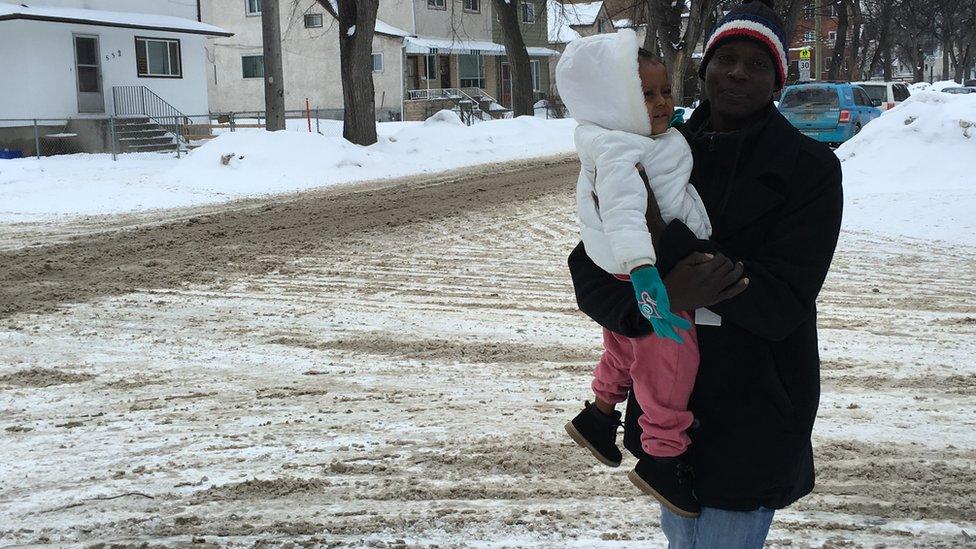
Refugee claimants arrive at the Welcome Place in Winnipeg
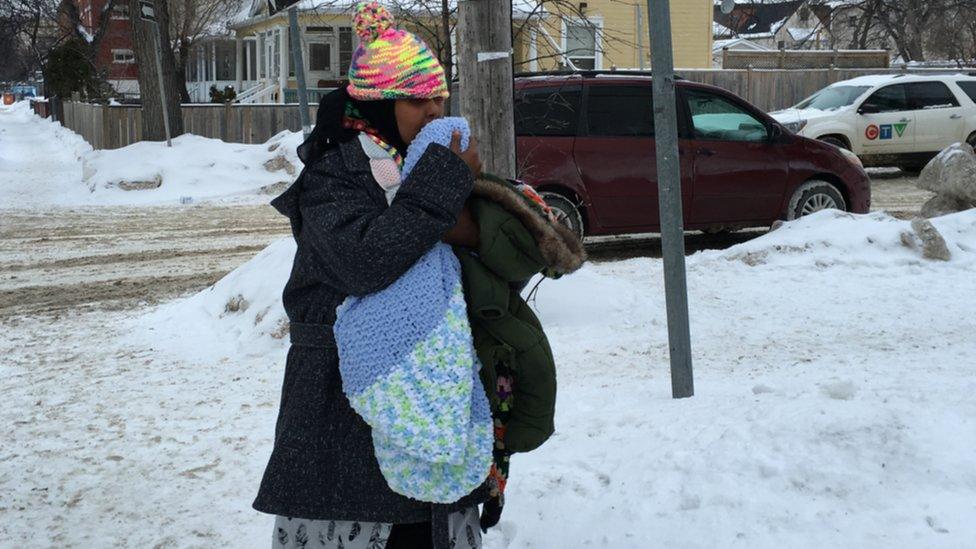
A refugee claimant arrives at Welcome Place settlement agency in Winnipeg
Settlement workers assisting with the newest claims are pointing to the political rhetoric south of the border for the recent spike.
Rita Chahal, executive director of the Manitoba Interfaith Immigration Council, has opened over 300 files since April 2016 for refugee claimants crossing near Emerson.
"Anecdotally, many people do express that they are concerned about what they saw at the airports, what they are seeing in the US," she says.
In fact, in a November speech in Minnesota, then-presidential candidate Donald Trump singled out the state's Somali community.
"Here in Minnesota, you've seen first hand the problems caused with faulty refugee-vetting, with very large numbers of Somali refugees coming into your state without your knowledge, your support or approval," he said.
Mohammed says he once viewed the US as a beacon for human rights and a place that welcomed newcomers but "when we came, we didn't see that".
He and Iyal have hearings in March to determine whether they can stay in Canada.
Their lawyer has told them not to divulge too many details about the specifics of their refugee claims but Iyal says he left Ghana for personal and political reasons.
Mohammed left because of his sexuality - being gay is illegal in the African country.
They say in the meantime they will continue to heal from their injuries and learn how to live with their disability.
"We just wait, impatiently, for what is coming next," Iyal says.
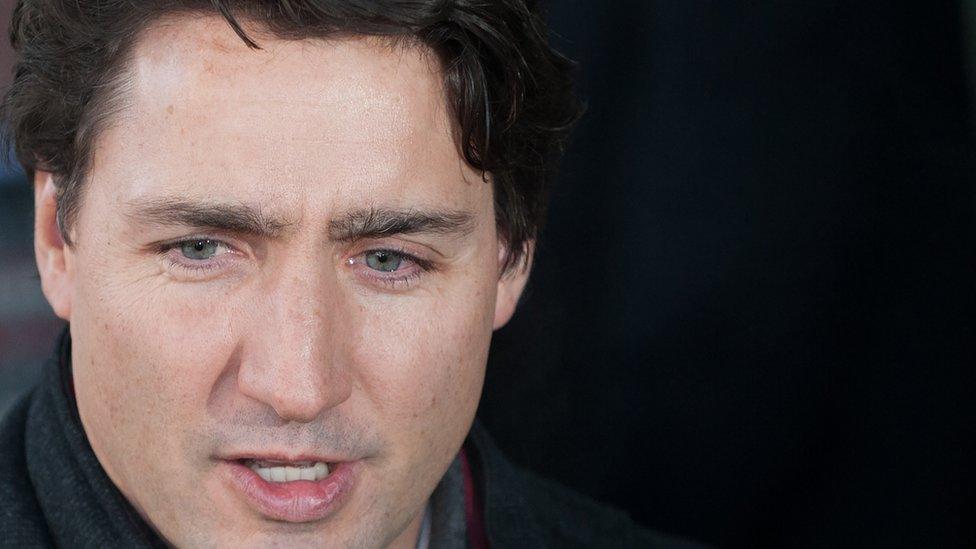
Prime Minister Justin Trudeau has spoken about how important it is for Canada to welcome refugees

- Published13 February 2017
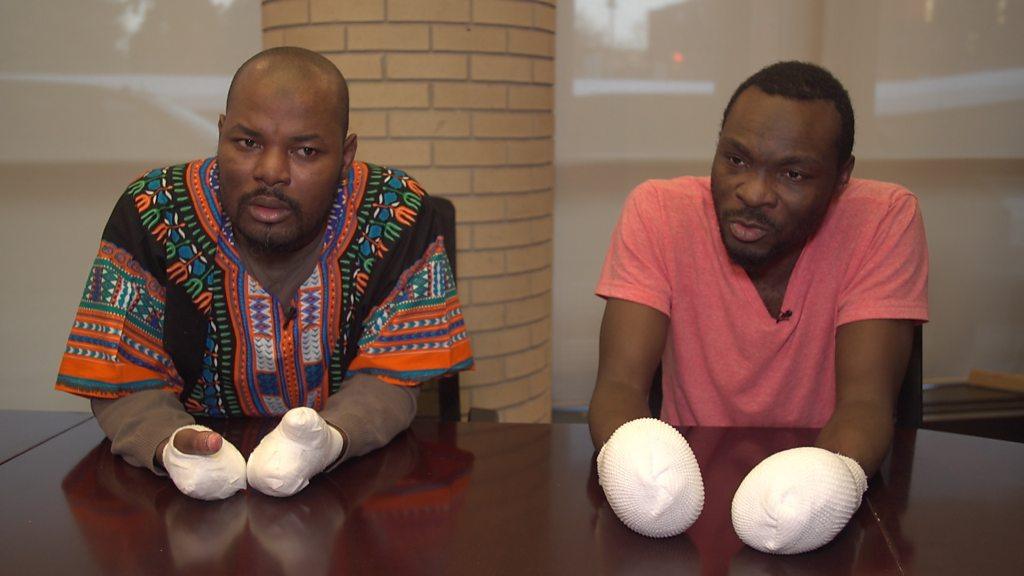
- Published29 January 2017
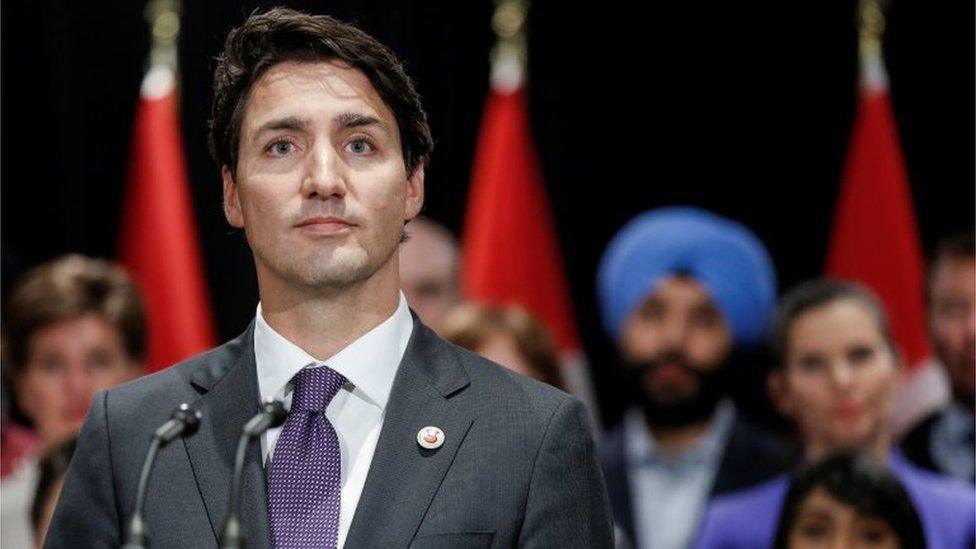
- Published13 February 2017
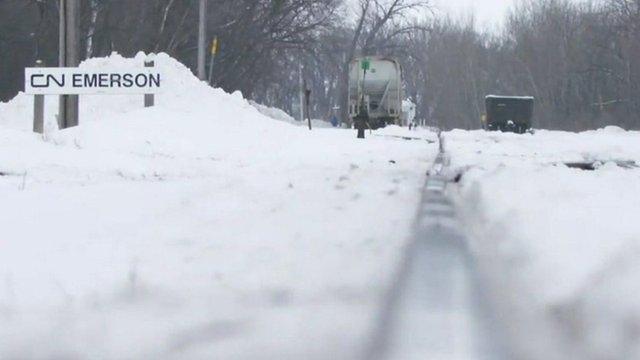
- Published10 February 2017

- Published13 February 2017
